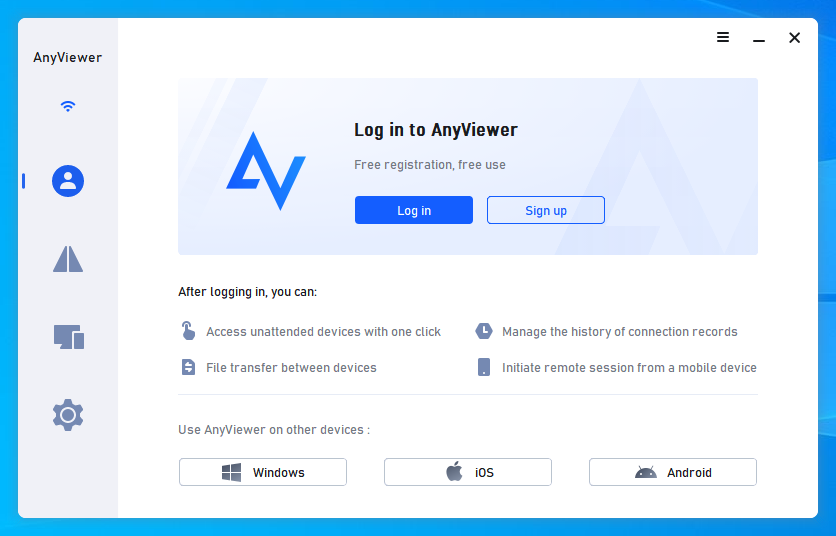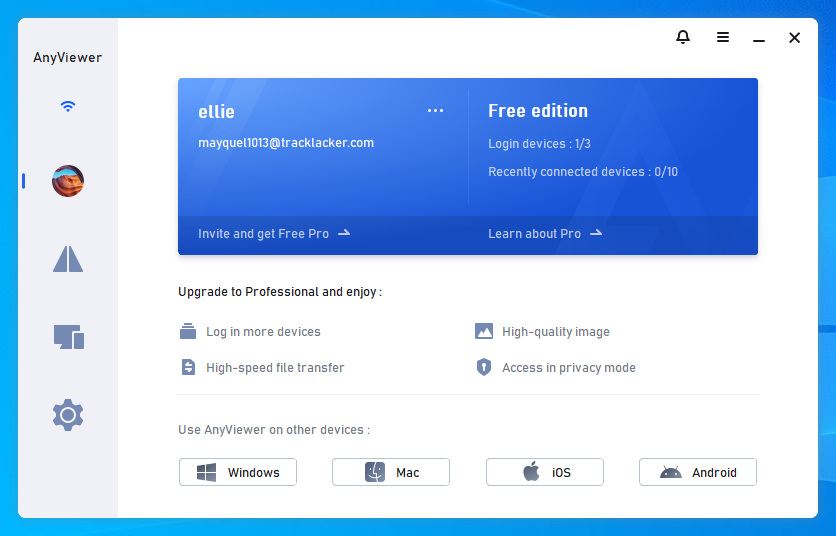In this post, you can get the answer to the question “Is pcAnywhere still available” and be given 3 free alternatives to pcAnywhere. Keep reading.
pcAnywhere is a remote access software that allows a user to get remote access to a PC. If you were a fan or former user of pcAnywhere, you may wonder: is pcAnywhere still available?
Unfortunately, the answer is NO. In January 2012, Symantec, the maker of pcAnywhere, announced a security flaw and advised users to stop using the software until the issues were resolved. In May 2014, Symantec officially discontinued pcAnywhere. Since then, pcAnywhere is no longer available.
After knowing the answer to the question "Is pcAnywhere still available?", many users are seeking free pcAnywhere alternatives. Here in this part, we’ll introduce 3 alternatives for you. Keep reading!
AnyViewer is a leading free software for remote access and control of computers and devices. It allows you to connect to your devices from anywhere, making it easy to provide support, transfer files, or collaborate online. It's a reliable choice for both personal and professional use.
AnyViewer stands out as the best alternative to pcAnywhere for several compelling reasons:
User-friendly interface: AnyViewer offers a straightforward and intuitive interface, making it accessible for users of all skill levels. Whether you're a beginner or an experienced IT professional, navigating the software is simple and efficient.
Robust security: AnyViewer places a strong emphasis on security. It uses end-to-end encryption (ECC 256-bit), two-factor authentication, and other advanced security measures to ensure that your remote sessions are secure and private. This is a significant upgrade from pcAnywhere, which had security vulnerabilities in the past.
Comprehensive feature set: AnyViewer offers a rich set of features including file transfer, multi-monitor support, unattended remote access, and mobile screen mirroring. These features make it a powerful tool for both personal use and professional IT support.
Performance and reliability: AnyViewer is known for its high performance and reliable connections, even over slower networks. It employs adaptive compression and intelligent routing to ensure smooth and responsive remote sessions, which is crucial for tasks that require real-time interaction.
Step 1. Download and install AnyViewer. Go to Log in, and then click Sign up.

Step 2. Fill in the signup information. Then you can see you successfully logged in to AnyViewer. Your device will automatically be assigned to the account you've logged in to.

Step 4. Log in to the same AnyViewer account on the two devices, then you can achieve a direct connection by clicking One-click control.
Remote Desktop is a Windows built-in feature that allows us to remotely control a PC if 2 PCs are within LAN or WiFi, which can be a useful pcAnywhere alternative. Here are the concrete steps of Remote Desktop.
✎Pay attention:
☞ If 2 PCs are not on the same LAN, you need to perform port forwarding.
☞ The host computer is running Windows 11/10/8.1 Enterprise/Pro Edition or Windows 7 Pro, Enterprise, Ultimate, and Windows Server after Windows Server 2008.
Step 1. Enable the Remote Desktop on the remote PC. Press "Win" + "R", input "sysdm.cpl" and click the "Enter" key.
Step 2. Go to the "Remote" tab, and ensure that "Allow remote connections to this computer" is checked. And then click on "OK".
Step 3. On the local PC, search "remote desktop connection" in the search box and double-click to open it.
Step 4. Enter the IP address or PC name of the remote PC and then click on “Connect”.
Step 5. Then, input the password and the username of the host PC. Finally, the remote connections will be established successfully.
Chrome Remote Desktop, a free remote access tool, is usually shown as a Chrome extension, which can be seen as a pcAnywhere alternative to access or control another PC from different operating systems.
Note: Chrome Remote Desktop must be run or downloaded in Chrome browser.
Step 1. On the host PC, open the Chrome Remote Desktop download page. Click on "Remote Support" and then click the blue download button.
Step 2. After that, click on “Add to Chrome” and "Accept & Install" to install it. Finally, enter a name and click on “Next”.
Step 3. Choose a PIN with at least 6 numbers, and then enter it twice to start the program.
Step 4. On the local PC, open the Chrome browser and navigate here. Then log in to the same Google account. Once logged in, you can see the available computers.
Step 5. Click on the computer set up previously, and enter its PIN. Then you could start your remote control.
Is pcAnywhere still available? Based on the information in this post, the answer is no. However, there are several free alternatives to pcAnywhere.
AnyViewer is a highly recommended option with its user-friendly interface, robust security, comprehensive features, and reliable performance. Additionally, Windows Remote Desktop and Chrome Remote Desktop offer practical solutions for remote access. Each of these alternatives provides unique benefits, ensuring users can continue to remotely access and control their PCs efficiently and securely.